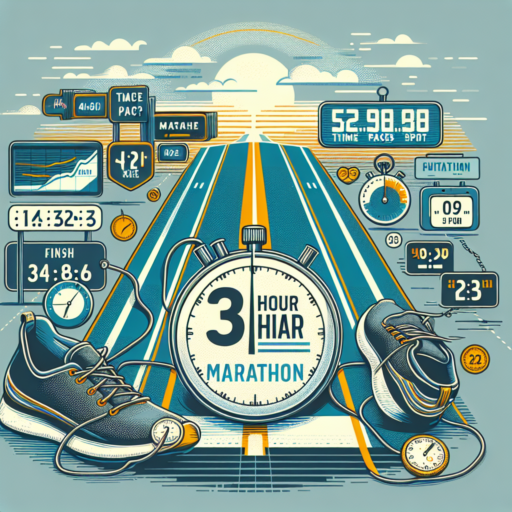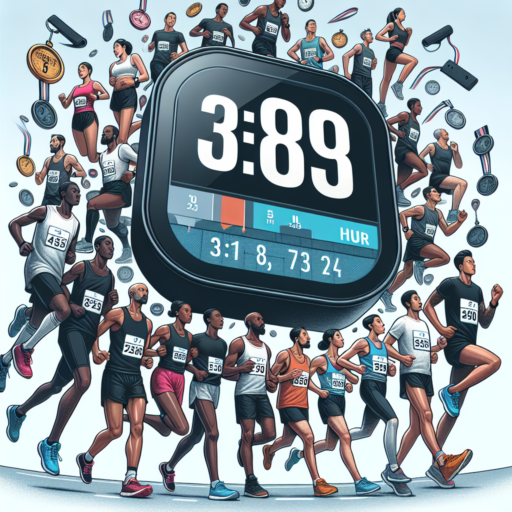What is a 3 hour marathon pace?
Achieving a 3-hour marathon is a significant milestone for many runners, symbolizing a transition into more elite pacing brackets. To run a marathon in exactly 3 hours, an individual needs to maintain a consistent pace throughout the 42.195 kilometers (26.219 miles) of the race. This article breaks down the specifics of maintaining such a goal pace, recognizing the dedication and preparation it entails.
The Pace Breakdown
To complete a marathon in 3 hours, a runner must maintain an average pace of approximately 4 minutes and 15 seconds per kilometer, or 6 minutes and 52 seconds per mile. This pacing is a blend of speed and endurance, requiring not only a strong base of mileage but also a disciplined strategy for race day. It’s about consistency, and even slight deviations can affect the overall time significantly.
Training for the Pace
Training for a 3-hour marathon typically involves a mix of long runs, tempo runs, interval training, and adequate recovery. It’s not just about the quantity of training, but the quality and specificity towards maintaining this aggressive pace. Each element of training is designed to improve different aspects of a runner’s fitness, such as speed, endurance, and efficiency, crucial for sustaining the pace over the marathon distance.
Understanding and aiming for a 3-hour marathon pace involves meticulous preparation and a firm grasp of pacing. Runners must gauge their current capabilities, adjust their training plans accordingly, and prepare mentally and physically for the challenge. While it’s a demanding goal, achieving a marathon in under 3 hours is a testament to a runner’s dedication, training, and resilience.
No se han encontrado productos.
What pace is a 3 hour 30 min marathon?
To determine the pace needed to complete a marathon in 3 hours and 30 minutes, it’s essential to break down the distance of a marathon, which is 26.2 miles (42.195 kilometers), into manageable segments. The pace for a 3 hour 30 minute marathon translates to approximately 8 minutes per mile or roughly 5 minutes per kilometer. This pace is a target many ambitious runners aim for, as it represents a significant achievement in endurance and speed.
Reaching and maintaining this pace requires not only a solid foundation of running experience but also a well-thought-out training plan. Runners contemplating this goal must incorporate a variety of workouts, including long runs, tempo runs, and interval training, into their regimen. Additionally, paying attention to recovery and nutrition plays a crucial role in successfully achieving the 3:30 marathon pace. It’s a balance of speed and stamina that challenges the body to adapt and become more efficient over long distances.
For those new to marathon running or aiming to hit this specific time target, understanding the pace in different segments of the race can be beneficial. The strategy should not only involve maintaining an even pace but also taking into account factors such as elevation changes, hydration, and energy replenishment strategies during the race. Improving one’s pacing over the marathon distance requires patience, dedication, and a focus on incremental progress. Achieving a sub-4 hour marathon, particularly aiming for the 3 hour 30 minute marathon, is a notable milestone in a runner’s journey.
How many people can run a 3 hour marathon?
Running a marathon in under 3 hours is a significant achievement that many runners aspire to. However, the number of people who can achieve this feat is relatively small when compared to the total number of marathon participants each year. Achieving a sub-3-hour marathon requires not only exceptional physical fitness but also a dedicated training plan, proper nutrition, and often, years of running experience. This elite performance places runners in a top percentile of marathon racers worldwide.
The exact percentage of marathoners hitting this ambitious time varies by the race and demographic factors such as age and gender. Statistically, it’s estimated that only about 2 to 5 percent of all marathon participants can break the 3-hour barrier. This starkly highlights the level of commitment and athletic prowess required to perform at such a level. Factors such as race conditions, course difficulty, and weather can also significantly impact a runner’s ability to finish within this coveted time frame.
For aspiring marathoners, the journey to a sub-3 marathon often involves meticulous attention to training intensity, volume, and recovery. Essential components of success include interval training, long runs, and tempo runs, aimed at increasing speed, endurance, and efficiency. Moreover, runners must optimize their nutrition and hydration strategies to fuel their training and recovery.
What pace is a sub 4 hour marathon?
Completing a marathon in under four hours is a significant goal for many runners, blending the challenges of endurance, speed, and mental fortitude. To achieve a sub 4 hour marathon, it’s essential to understand the specific pace that needs to be maintained throughout the race. This involves breaking down the marathon distance of 26.2 miles (or 42.195 kilometers) into a consistent speed that will see you crossing the finish line just in time.
To achieve this coveted timing, runners need to maintain an average pace of approximately 9 minutes and 9 seconds per mile, or 5 minutes and 41 seconds per kilometer. This pace strikes a balance between being brisk enough to beat the clock while still being manageable over the marathon’s demanding distance. Maintaining this pace requires not only physical preparation but also a strategic approach to the race, including pacing strategies, hydration, and energy management.
While the objective number is straightforward, achieving and maintaining this pace varies widely among runners. Factors such as weather conditions, race course specifics, and individual fitness levels can significantly impact one’s ability to sustain the sub 4 hour pace. As such, focused training regimes, including long runs, speed work, and tempo runs, are crucial for building the endurance and speed necessary to not only hit, but possibly surpass, this marathon milestone.




